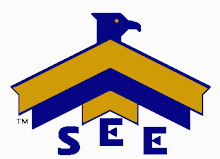Correct Fit-The Beginning
The first interaction a leader has with a team member is during the hiring and recruiting process. Although usually brief, this first meeting needs to be used to assess the proper fit for a potential team member.
Traditionally, interviews were used to discuss qualifications, education and experience. All of those things have value but not nearly as much as fit and interpersonal skills. To drive this point home, look at your current problematic team members. The ones with two inch thick files. The ones that come off and on disciplinary action with regularity. The ones that constantly are causing trouble but avoid termination.
Now, as you look at those problematic team members, critically review why they are problematic. Is it because of a lack of technical skills, qualification and education or is it because of a lack of fit with the existing team or lack of interpersonal skills? Most managers and leaders agree it is because of the latter and not the former. Interpersonal skills and ability to fit with the existing team are far greater predictors of workplace success than technical ability or education.
Back to the interview. The leader’s job in the interview process is to determine if someone will fit properly with the existing group and in the culture built by the leader and team. This is most often discovered in situational questions about how a job candidate would respond and react to the common scenarios in your working environment. The leader can then compare the job candidate’s response to the desired outcome or how his or her team currently responds and reacts. This is also a great technique for behavioral interviewing.
The leader must also check and test a potential team member’s interpersonal skills. How they work with others. How they communicate. How they solve problems. How they handle adversity. How they operate under pressure and stress. What do terms like accountability and responsibility mean to them? These are the interpersonal skill check points that are so critical in the modern working environment.
The effective leader recruits team members based on interpersonal skills and fit and avoids the common over-emphasis on experience and education.
Correct Fit-The End
The most difficult role of coaching is ending someone’s employment on your team. Difficult but necessary.
In fact, many managers and supervisors make a far bigger mistake by extending employment longer than they should and providing way too many opportunities for improvement and change. This is not an invitation to be rash and take these decisions lightly, but the impact of not terminating a team member when required is far greater than terminating a team member too soon.
The Lakota Sioux tribes of the northern and western plains had a saying. They believed “when you encounter a dead horse, it is best to dismount.” Not comparing team members to dead horses but good leaders recognize when someone is not fitting or not performing pretty early in the team relationship. When the determination is made that the team member will not perform or will not fit after appropriate coaching and counseling, the leader must end their employment.
In the modern working dynamic, most firing decision require multiple levels of approval and many sets of documentation and hoops to jump through. One of the biggest leadership mistakes is to look at these obstacles as insurmountable. Some mangers and supervisors, when told to obtain additional documentation, simply give up and label the team member as fire-proof or protected. This mistake, although convenient at the time, will lead to greater performance and behavior problems with the entire team.
Dragging a termination decision or action too long sends a horrible message to other team members. Rewarding poor performance or behavior will tell the team that those actions work. As a leader, you will also be faced with people that dare you to fire them. Don’t back down. Do them the favor for which they are asking.
Subscribe to:
Post Comments (Atom)






No comments:
Post a Comment